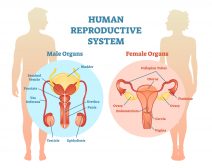Long-terminal repeat
(Science: molecular biology) identical dna sequences, several hundred nucleotides long, found at either end of transposons and the proviral dna, formed by reverse transcription of retroviral rna.
They are thought to have an essential role in integrating the transposon or provirus into the host dna. Long terminal repeats have inverted repeats, that is, sequences close to either end are identical when read in opposite directions. In proviruses the upstream long-terminal repeat acts as a promoter and enhancer and the downstream long-terminal repeat as a polyadenylation site.
Acronym: ltr
Dictionary > Long-terminal repeats
You will also like...

Plant Cells vs. Animal Cells
Plant cells have plastids essential in photosynthesis. They also have an additional layer called cell wall on their cell..

Neural Control Mechanisms
Neurons generate electric signals that they pass along to the other neurons or target tissues. In this tutorial, you wil..

Origins of Life on Earth
Earth was created around 4.5 billion years ago and life began not long after. Primitive life likely possessed the elemen..

Human Reproduction
Humans are capable of only one mode of reproduction, i.e. sexual reproduction. Haploid sex cells (gametes) are produced ..

Early Mammals on Earth
The Earth's ecosphere was rapidly changing and throwing up a wide range of ecological niches that new adaptive organisms..

Geological Periods
Geological periods is a study guide that cites the different geological periods on Earth's timeline. Each has a brief ov..

